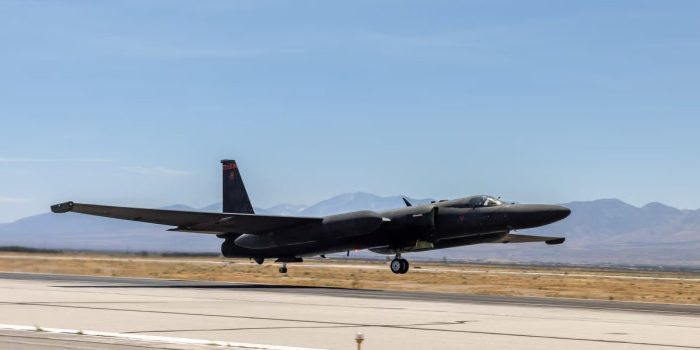Lockheed Martin’s secretive Skunk Works division has recently achieved a significant milestone by completing the first test flight of an upgraded Lockheed U-2 Dragon Lady, a vintage Cold War spy plane. This achievement marks a new lease on life for this iconic aircraft, as it undergoes a transformation with an advanced avionics suite and enhanced cockpit displays.
The U-2, which made its debut in 1956, was initially designed to address the need for reconnaissance of Warsaw Pact territories that lacked proper photographic documentation since the time of the Luftwaffe. The primary objective was to create a specialized aircraft that could operate from forward bases in locations like Britain, capable of flying long distances at an astonishing altitude of 70,000 feet (approximately 21,300 meters). This extreme altitude allowed the U-2 to operate well above the effective reach of contemporary air defense systems.

However, the U-2 faced a significant setback in May 1960 when a U-2 piloted by Gary Powers was shot down by Soviet missiles. Despite this incident, the U-2’s ability to fly at such high altitudes remained a critical asset, enabling it to serve with the US Air Force for over half a century. By operating at extreme altitudes, the U-2 could rapidly deploy over enemy territory, gathering photographic and electromagnetic intelligence while staying safely within international airspace.
Nevertheless, the U-2 is notorious for its challenging flight characteristics, particularly at lower altitudes. Thus, continuous improvements are essential to ensure its continued serviceability. Under a $50-million contract, the Avionics Tech Refresh (ATR) program was initiated, encompassing the installation of a new avionics suite featuring an advanced mission computer.
This computer allows the U-2 to conform to the Air Force’s Open Mission Systems (OMS) standard, facilitating integration with various security systems across air, space, sea, land, and cyberspace domains.

Furthermore, the upgrade includes the capability to quickly adopt new technology and an improved cockpit with enhanced digital displays, ensuring efficient data presentation to the pilot, ultimately enabling quicker and more informed decision-making.
During the initial flight test, the U-2 equipped with the upgraded avionics suite underwent a low-altitude functional check to assess the integration of new avionics, cabling, and software. Subsequent tests will focus on further improving the software and integrating new mission systems.
Sean Thatcher, the U-2 Avionics Tech Refresh program manager at Lockheed Martin Skunk Works, emphasized the significance of this achievement, stating, “The successful first flight of the U-2 Avionics Tech Refresh is a significant moment in our journey to rapidly and affordably field new capabilities. Leveraging the platform’s open architecture, we’re expediting these capabilities needed for the future Joint All-Domain Operations battle space.”
The upgrades aim to enhance the U-2’s role in future Joint All-Domain Operations, where seamless integration across various domains is essential for success. This historic aircraft is set to continue its mission, contributing to the nation’s defense and security for years to come.


